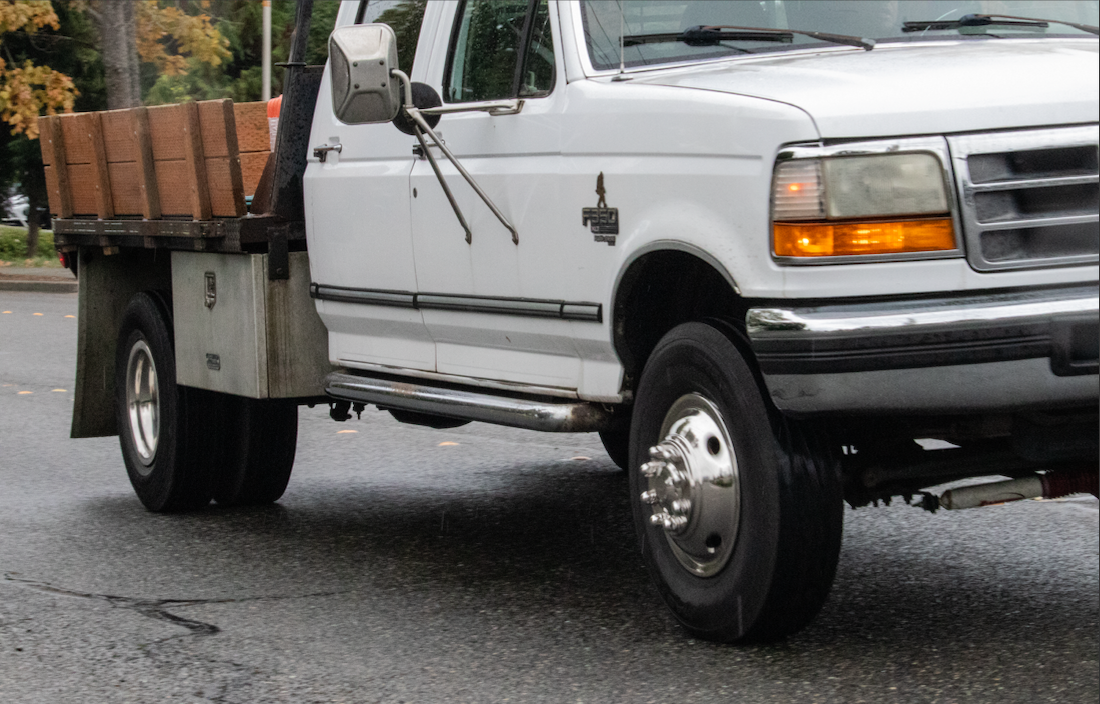Hydroplaning often happens when it’s raining heavily and you’re driving too fast. It’s when your tires lose contact with the road and ride on a thin layer of water between your tires and the road’s surface. This loss of traction can cause you to lose control of your vehicle. Here are some tips on how to avoid hydroplaning and what to do if it happens to you.
What it is and how to avoid it:
Hydroplaning occurs when your tire tread cannot channel away enough water at a fast enough rate to maintain contact with the road. The water pressure in front of the wheel pushes water under the tire, causing it to lift off the road surface.

flickr.com
A minivan hydroplanes in standing water.
To avoid hydroplaning, you should slow down when roads are wet, as the faster you drive, the harder it is for your tires to displace water properly. You should also maintain proper tire tread, making sure your tires have adequate tread depth for channeling water away properly.
As Mike Anderson, a manager at Discount Tire, explained, “The leading causes are worn tread, underinflated tires, and driving too fast in wet conditions. Tires need adequate tread depth and inflation to channel water away properly.”
Generally, tires should have at least 4/32 inch of tread depth. As Anderson recommended, “We recommend a minimum tread depth of 4/32 inch, but preferably 6/32 inch or more in wet weather regions. Replace tires around 2/32 inch.”
You’ll want to avoid worn tires, replacing them when they reach 2/32 inch of remaining tread, and maintain proper tire inflation, as underinflated tires can cause excessive tire flexing, reducing the tire’s ability to channel water. Additionally, try to stay away from puddles, driving around them or bodies of water on the road when possible.
Here’s what to do when you hydroplane:
If you do start to hydroplane, stay calm and avoid sudden braking or turning, which can cause you to lose even more control. Instead, take your foot off the gas pedal to slow down gradually. Keep the steering wheel straight and ride it out, not trying to turn back onto the road. Wait for your tires to regain traction with the road.
When you feel the tires grip again, gently apply brakes to continue slowing down. Turn on your hazard lights if you’re still traveling slower than surrounding traffic, and find a safe place to pull over if needed to recover and calm down before continuing.
While hydroplaning can be scary, staying focused on gradual correction can help you regain control. Driving attentively in wet weather is key to avoiding hydroplaning in the first place. As Anderson stressed, “Be vigilant in wet weather by slowing down, increasing following distance, and avoiding standing water.”
On recovering car control after hydroplaning starts, he advised: “Stay calm, ease off the gas, hold the wheel straight, and avoid sudden braking or turning. Wait for your tires to regain traction before braking gently and pulling over if needed to recover.”
Hydroplaning can happen to any driver in wet conditions. Staying alert, driving slower, and maintaining adequate tire tread and inflation are your best defenses. If it does occur, avoid overreacting so you can bring your car back under control once traction returns.

